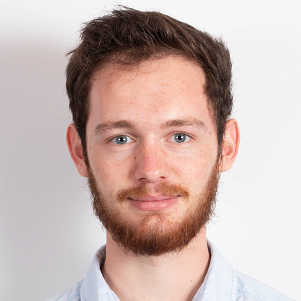

Today we welcome two new PhD students in the group! Hugo begins a work on optoelectronics with hybrid organic perovskites. Meanwhile, Damien starts his PhD on optical levitation on particles in vacuum.


Today we welcome two new PhD students in the group! Hugo begins a work on optoelectronics with hybrid organic perovskites. Meanwhile, Damien starts his PhD on optical levitation on particles in vacuum.

Photostability of single-walled carbon nanotubes/polymer core-shell hybrids as Telecom Wavelength Emitters
Lucile Orcin-Chaix, Stéphane Campidelli, Loic Rondin, Frédéric Fossard, Fabien Bretenaker, Yannick Chassagneux, Christophe Voisin, Jean-Sébastien Lauret
ACS Appl. Nano Mater. 3, 7291–7296 (2020)
Abstract: In the spirit of the core-shell approach that made it possible to greatly enhance the photostability of semiconductor nanoparticles, we study the emission stability of single carbon nanotubes emitting at telecommunication wavelengths protected by a double shell of polymer.
Two types of structures with different polymer layers have been studied at cryogenic temperatures, whereas nanotubes wrapped with poly(9,9-di-n-octylfluorenyl-2,7-diyl) and embedded in a bulk polystyrene matrix were used as a reference. A Mandel parameter description applied to the emission intensity and an Allan deviation analysis of the spectral diffusion show quantitatively that the polymer shells stabilize the emission of single carbon nanotubes by more than one order of magnitude in comparison with micelle wrapped nanotubes deposited on a SiO$_2$ surface. This represent an additional step towards the use of single-walled carbon nanotubes as quantum emitters at telecommunication wavelengths.

Read on the journal website
Nanomaterials 2020, 10(3), 548
The great affinity of gold surface for numerous electron-donating groups has largely contributed to the rapid development of functionalized gold nanoparticles (Au-NPs). In the last years, a new subclass of nanocomposite has emerged, based on the association of inorganic molecular entities (IME) with Au-NPs. This highly extended and diversified subclass was promoted by the synergy between the intrinsic properties of the shell and the gold core.
This review—divided into four main parts—focuses on an introductory section of the basic notions related to the stabilization of gold nanoparticles and defines in a second part the key role played by the functionalizing agent. Then, we present a wide range of inorganic molecular entities used to prepare these nanocomposites (NCs). In particular, we focus on four different types of inorganic systems, their topologies, and their current applications. Finally, the most recent applications are described before an overview of this new emerging field of research.

The group recently published a paper entitled “Room-Temperature Cavity Polaritons with 3D Hybrid Perovskite: Toward Large-Surface Polaritonic Devices”. ACS Photonics 6, 1804 (2019)
Hybrid halide perovskites are now considered to be key materials for contemporary research in photovoltaics and nanophotonics. In particular, because these materials can be solution processed, they represent a great hope for obtaining large-surface devices suited to a wide scale of wafers and large-scale integrated devices. While the potential of 2D layered hybrid perovskites for polaritonic devices operating at room temperature has been demonstrated in the past, the potential of 3D perovskites has been much less explored for this particular application. Here, we report the strong exciton–photon coupling with 3D bromide hybrid perovskite. Cavity polaritons are experimentally demonstrated from both reflectivity and photoluminescence experiments, at room temperature, in a 3λ/2 planar microcavity containing a large-surface spin-coated CH3NH3PbBr3 thin film. A microcavity quality factor of 92 was found, and a large Rabi splitting of 70 meV was measured. This result paves the way to large-surface and low-cost polaritonic devices operating at room temperature, compatible with electrical injection.
The NanO-Optics and Spectroscopy team (NOOS) is a research team from the LUMIN lab. We are located in the 505 building of Paris-Saclay University. Our research activity is dedicated to three different topics:
We are always looking for interns. Do not hesitate to contact us.